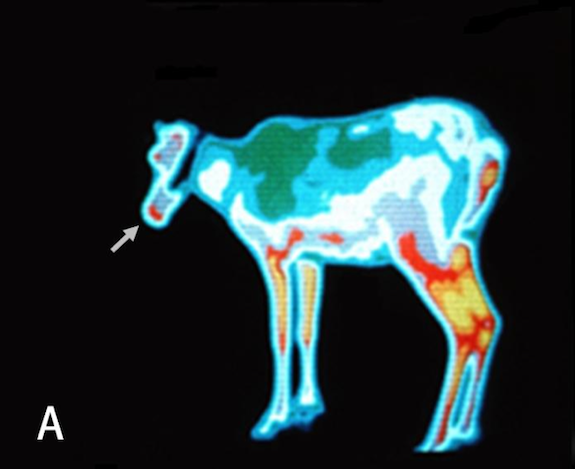The Scientific Reason Why Reindeer Have Red Noses
Some reindeer really do have red noses, a result of densely packed blood vessels near the skin’s surface
![]()

Some reindeer really do have red noses, a result of densely packed blood vessels near the skin’s surface. Image courtesy of Kia Krarup Hansen
In 1939, illustrator and children’s book author Robert May created Rudolph the Red-Nosed Reindeer. The character was an instant hit—2.5 million copies of May’s booklet were circulated within a year—and in the coming decades, Rudolph’s song and stop-motion TV special cemented him in the canon of cherished Christmas lore.
Of course, the story was rooted in myth. But there’s actually more truth to it than most of us realize. A fraction of reindeer—the species of deer scientifically known as Rangifer tarandus, native to Arctic regions in Alaska, Canada, Greenland, Russia and Scandinavia—actually do have noses colored with a distinctive red hue.
Now, just in time for Christmas, a group of researchers from the Netherlands and Norway have systematically looked into the reason for this unusual coloration for the first time. Their study, published yesterday in the online medical journal BMJ, indicates that the color is due to an extremely dense array of blood vessels, packed into the nose in order to supply blood and regulate body temperature in extreme environments.
“These results highlight the intrinsic physiological properties of Rudolph’s legendary luminous red nose,” write the study’s authors. “ help to protect it from freezing during sleigh rides and to regulate the temperature of the reindeer’s brain, factors essential for flying reindeer pulling Santa Claus’s sleigh under extreme temperatures.”
Obviously, the researchers know reindeer don’t actually pull Santa Claus to deliver gifts around the world—but they do encounter a wide variation of weather conditions on an annual basis, accounting for why they might need such dense beds of capillary vessels to deliver high amounts of blood.
To come to the findings, the scientists examined the noses of two reindeer and five human volunteers with a hand-held video microscope that allowed them to see individual blood vessels and the flow of blood in real time. They discovered that the reindeer had a 25% higher concentration of blood vessels in their noses, on average.
They also put the reindeer on a treadmill and used infrared imaging to measure what parts of their bodies shed the most heat after exercise. The nose, along with the hind legs, reached temperatures as high as 75°F—relatively hot for a reindeer—indicating that one of the main functions of all this blood flow is to help regulate temperature, bringing large volumes of blood close to the surface when the animals are overheated, so its heat can radiate out into the air.

In an infrared image, a reindeer’s nose (indicated by arrow) is shown to be especially red, a reflection of its temperature-regulating function. Image via Ince et. al.
Read more articles about the holidays in our Smithsonian Holiday Guide here
/https://tf-cmsv2-smithsonianmag-media.s3.amazonaws.com/accounts/headshot/joseph-stromberg-240.jpg)
/https://tf-cmsv2-smithsonianmag-media.s3.amazonaws.com/accounts/headshot/joseph-stromberg-240.jpg)